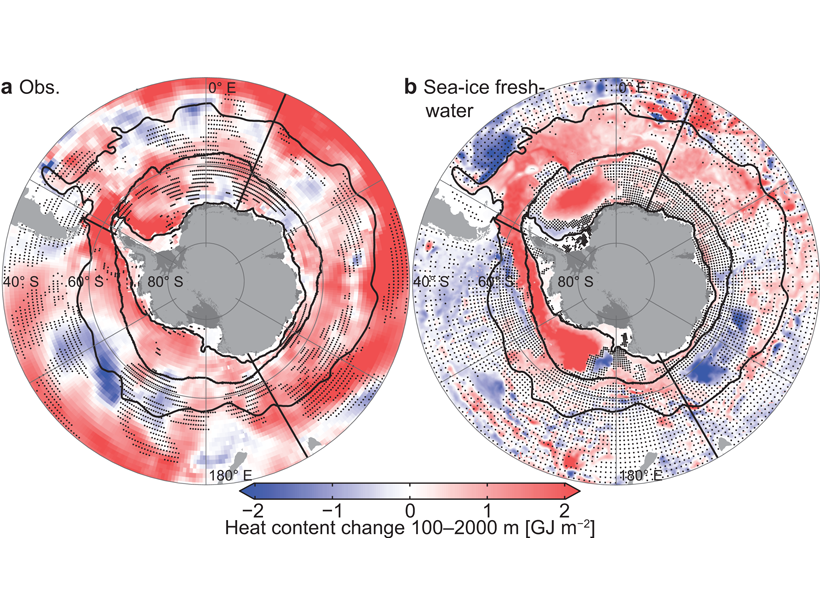Source: AGU Advances
Most of the global ocean surface has been warming in response to increased greenhouse gases concentrations. One notable exception is the ocean south of 50 degrees south which, from the early 1980s to the early 2010s, has become colder/fresher in the upper 100 meters and warmer below. Various hypotheses have been proposed to explain this trend, among them a) increased glacial meltwater input due to ice shelf thinning, and b) increased northward transport of cold waters in response to the observed poleward shift of the southern-hemisphere westerlies.
Haumann et al. [2020] propose a further hypothesis of increased northward transport of sea ice over that period. The team carried out a suite of numerical simulations using a regional ocean model to investigate the three hypotheses by separately increasing sea-ice fluxes, freshwater input from the Antarctic continent and ocean-atmosphere momentum input by winds.
The observational trends are best reproduced in the simulations with increased lateral sea-ice transport. The underlying process is elucidated, leading to freshening/cooling of the surface waters and warming of the subsurface layer. This warming has important climate implications because the heat trapped in the subsurface accounts for approximately 8 percent of the global ocean heat content increase over that time period.
Citation: Haumann, F.A., Gruber, N., & Münnich, M. [2020]. Sea-ice Induced Southern Ocean Subsurface Warming and Surface Cooling in a Warming Climate. AGU Advances, 1, e2019AV000132. https://doi.org/10.1029/2019AV000132
—Paola Rizzoli, Editor, AGU Advances
Text © 2020. The authors. CC BY-NC-ND 3.0
Except where otherwise noted, images are subject to copyright. Any reuse without express permission from the copyright owner is prohibited.

